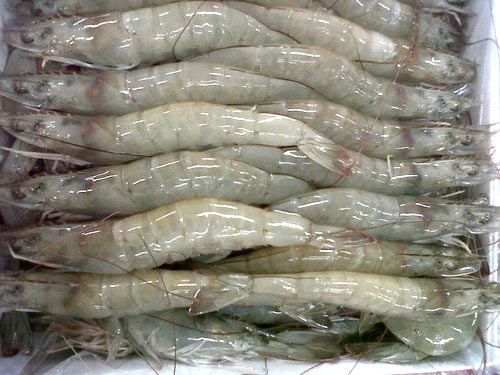There is one mega-trend that is driving the digital transformation of the seafood sector more than anything else. Since 1990, the relative price of fish, according to the FAO Fish Price Index, has increased by 60 percent. It’s more achievable than ever to use technology to track raw material in seafood processing.
In fact, raw material can cost up to 75 percent of the total cost of production, higher than any other input. That’s why seafood processors keenly monitor their yields or recovery rates, the percentage of raw material that ends up in the final product. Waste can significantly impact their bottom line.
The Japanese production method known as “lean manufacturing” is obsessed with eliminating seven types of waste. So, let’s see how leaning manufacturing applies to seafood processing.
Planning
Poor production planning can lock-in waste even before a single shrimp beheaded. How? First, raw material can be mismatched to final product specifications. If you don’t meet a customer’s minimum requirements, a costly return could occur. On the other hand, exceeding a customer’s requirements can be wasteful as well.
A simple mistake, such as accidentally writing the wrong lot code, can also be incredibly costly. Indeed, if a mistake isn’t caught early on, the cost grows exponentially at every stage of production. Imagine if the wrong raw material is accidentally specified in planning and the product is produced and shipped, only to be returned by a dissatisfied customer. The cost is exponentially higher than if the error was caught and corrected when the shrimps was picked from cold storage or even in production.
Planning challenge is accurately predicting how much raw material is needed to fill an order. Processors need to maintain updated yield estimates, which can be challenging given the number of variables that can impact recovery rates such as shrimp size, cold storage duration, quality, product type, and so on. Inaccurate yield estimates result in overproduction or underproduction.
Production
Uneven and overburdened production processes cause waste. Rushed workers make mistakes which cause quality issues.
For example, peeler may have lower yields as they speed up peeling. A stressed supervisor may accidentally overcook soaked material, causing yields to collapse. Bottlenecks can cause delays and downgrading of product. All these problems drive up material costs.
Even when everything goes right in production, things can still go wrong in shipping. I talked to one processor that discovered that their loading staff were accidentally overstuffing shipping containers by 10 percent, resulting in loss to the company each year. Accidentally putting one wrong pallet into a shipping container can create compliance problems at borders, resulting in delays or even rejections by Customs officials.
Supplier Settlement
Selling finished goods is the responsibility of processor so as purchase is good raw material is one of the most important aspect of seafood business. With volume and perishable nature if the material it’s always chase between supplier yield tracking and production. Many times, processors overlook raw material yield, which at end hit profit margins.
How can software help?
So how can software help? In Japanese lean manufacturing, there are methods for preventing or catching mistakes. Digitization can play a key role here.
Software can help data collection, maintaining data integrity, sharing, and reporting, reducing the risk of errors. In a paper-based system, data is often copied from one form to the next in the production process. That data is then copied into Excel spreadsheets for reporting with no data integrity. Software enables data to automatically flow from user to user, and integrations with other software can automate data sharing and reporting.
Yet not everything can be done in software, which is where visual feedback system comes into play. With software with predefine yield, data can be displayed in dashboards, in reports and on users’ screens. For example, software can be programmed to issue a visual alert when a yield falls outside a maximum and minimum range. Incomplete or duplicate data entries could trigger a pop-up warning on a screen.
When errors or non-compliance does occur, they are immediately visualized for the operator, but also for everyone else using the software. If one person doesn’t catch a mistaken, then another one will. And the sooner a mistake is caught and corrected, the less expensive it will be.
Because of the natural viability of shrimp, it can be difficult for seafood processors to predict quality and production outcomes, such as yield. It allows managers to better monitor their performance, ensuring they are doing everything they can to maximize profitability.
According to the report Traceable Returns by Planet Tracker, seafood processors average only 3.4 percent earnings margin before interest and tax. Planet Tracker estimates that profit margins could double with increased investments in traceability technology. While traceability is often promoted by NGOs to prove food provenance, it is also key to managing raw material costs which, is key to improving profitability.
Manoj Patil,
Director, Cruxzen Technologies Pvt. Ltd.
